Best Food Photography Lenses for you and your purposes: Best options for closeups, flat lays, stories and commercial shooting for every budget!

Especially when you’re beginning food photography, the big question is, “what are the best lenses for food photography?”. Please read this before you make any investments!
Let’s start with the basics.
Camera Bodies
When choosing a camera body for your food photography, it’s important to remember that you are essentially committing yourself to a brand. The lenses you purchase for this camera body will not work on other brands. Once you’ve invested into a system, it becomes a huge expense to switch.
Some of the top brands on the market are Canon and Nikon. It’s important to do your research first before purchasing.
These two brands have a long history which is beneficial because that means you have a long list of photography equipment compatible with either of them.
Important thing to note before you invest in a DSLR body: Some Nikon lenses are more pricey than Canon (especially entry-level)!
Both of these brands have outstanding performance, but there are a few areas where Canon stands out where Nikon doesn’t and vice versa. If you want more of an in-depth look of which one may be the better option for you check out this article on Canon vs. Nikon.
Another option you would have is using a third party lens such as the lenses from Sigma and Tamron. These lenses have pretty good quality.
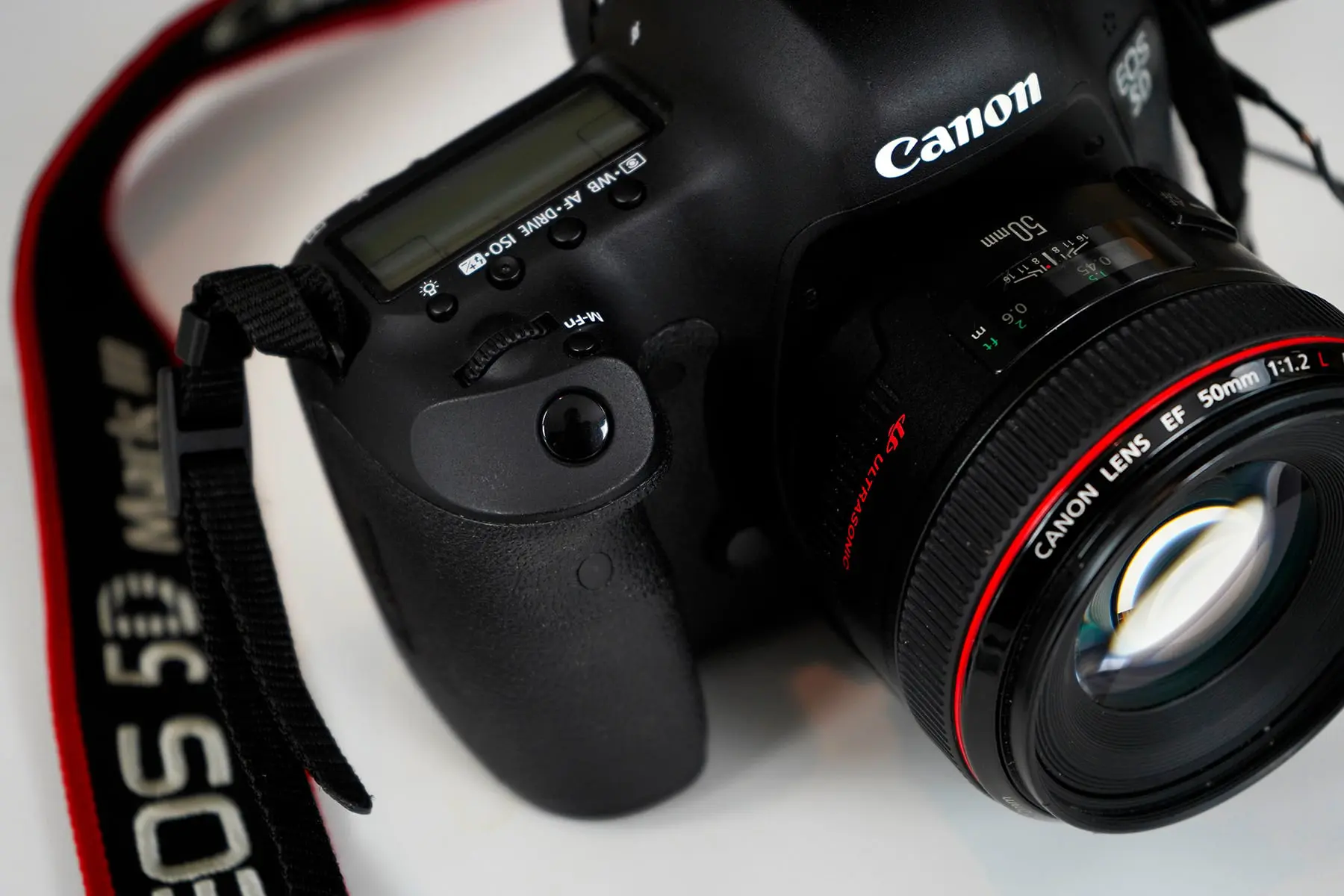
Cropped Sensor vs. Full Frame
A very important factor when considering a camera body is whether it has a cropped sensor or a full frame sensor. High end cameras are likely to have a “full frame” which means the camera has the same dimensions as the standard: 35mm film or 24mm x 36mm.
Cropped sensors aren’t capable of imaging the full area of 35mm so it ‘blows up’ each image to reach the 35mm format. Canon crops sensors crop your image by 1.6x, while Nikon APS-C crop factor is 1.5x.
For example, if you shoot with a 50mm lens on a full frame, its focal length would be 50mm. At the same time, if you shoot with the same lens on a cropped sensor DSLR, the focal length would be 80mm for Canon or 75mm on Nikon.
That means that the cropped sensor reduces your field of view through a lens, so you usually have to step back to achieve the same view as with a full-frame camera.
Cropped sensor cameras tend to be more affordable. One of my favorite cropped sensor cameras is Canon EOS 80D.

Full frame gives the photographer more options when it comes to wide angle work, as well as produce better picture quality and colors because they can handle higher ISO numbers. A great option of a full frame DSLR is Canon EOS 5D Mark IV.
The downside is that full frame DSLR cameras can be heavier and more expensive.
One very important thing to note is that some lenses are made specifically for cropped sensor cameras and they will not work on a full frame camera. This is super important to remember because if you decide to upgrade to a different camera body in the future, you may have lenses that aren’t compatible.
The good news is that you would most likely not face this issue with Canon lenses if you opt for their EF lenses that fit both cropped sensor and full frame (as opposed to EF-S lenses that can’t be used on full-frame cameras).
Understanding Lenses
Understanding and knowing what lenses work best for food photography can make all the difference in your images.
If you’re just beginning, your best option is to start with your kit lens. That’s the lens that comes together with your camera. It usually is a 18-55 mm f/3/5-5.6.
This is a safe option for most people before they grow in their skill and start to feel more confident. After that is a great time to upgrade. Lenses are in general quite pricey so you want to make sure that you purchase a lens that is right for you and your purposes.
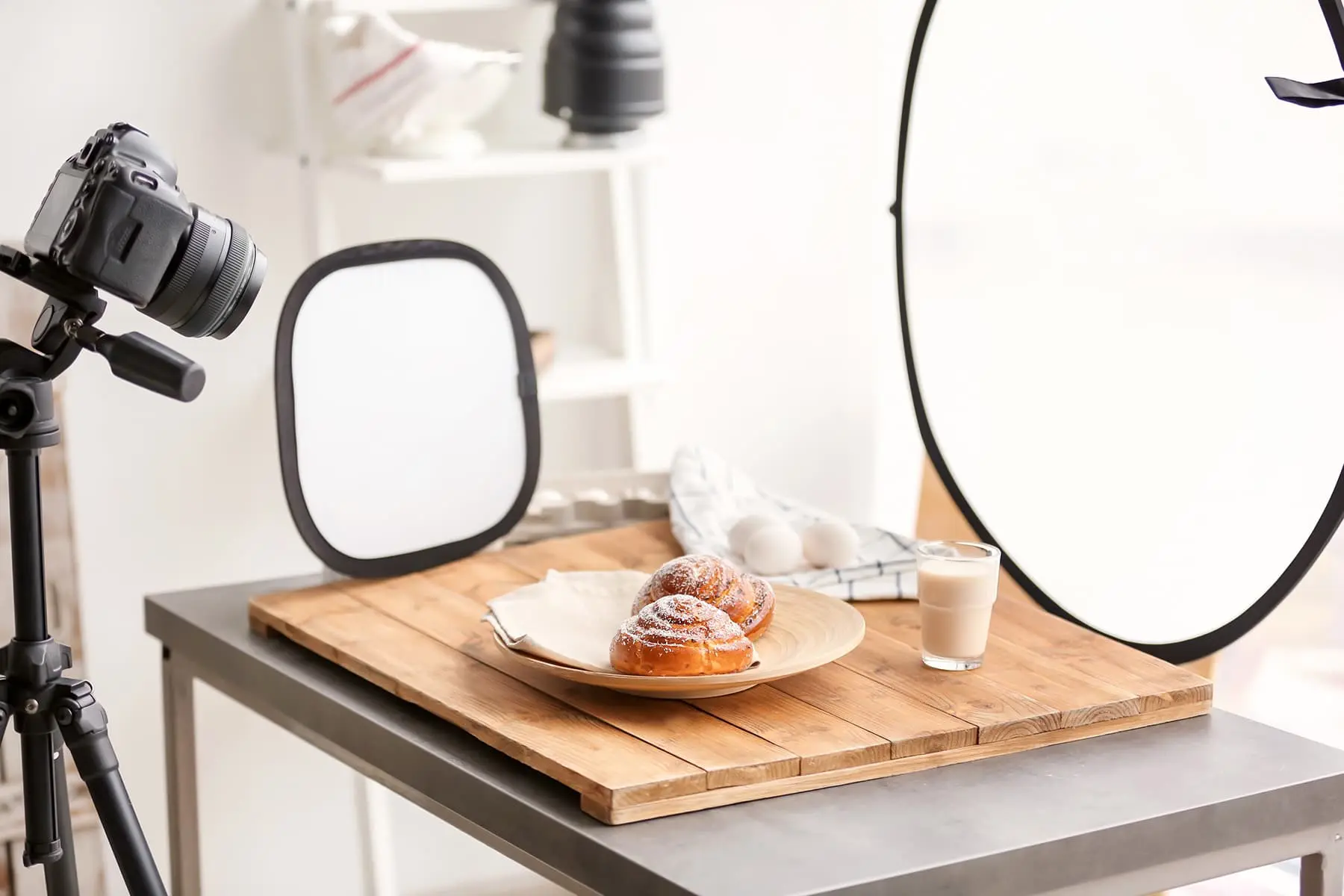
How Lenses Differ
There are three big factors that determine the quality of the lens: focal length, prime vs zoom, and lowest aperture value.
Focal Length
Focal length isn’t actually the measurement of the lens itself, but it tells us how “zoomed” in your photos are. Typical focal lengths of lenses are 50 mm, 100 mm, 35 mm, etc.
It tells us the angle of view—how much of the scene will be captured—and the magnification—how large individual elements will be.
The longer the focal length, the narrower the angle of view and the higher the magnification. The shorter the focal length, the wider the angle of view and the larger area captured.
This article is digging deeper into focal length.
Prime Vs. Zoom Lenses
A prime lens offers you only one view – that means you’ll have to physically move closer to your subject.
A zoom lens, on the other hand, offers a closer and broader view of your subject just by moving the dial. You won’t have to physically move to adjust your angle of view.
With cheaper zoom lenses you may want to be attentive to the fact that certain compromises of quality must be made in order to keep it affordable.
Lowest Aperture Value
When looking at the lower aperture value you’ll see numbers like f/1.8, f/4, etc.
Basically the aperture is the pupil of your camera and it can add dimension to your photos by adding depth of field.
A quick tip on aperture is that the lower the number, the more blurry background is.
For food photography, you might want to look at lenses with lower aperture numbers because they will give you a shallow depth of field that looks so good with food photos.
Best Food Photography Lenses
If you are looking for the best lenses for food photography, here are my recommendations:
1. Lens: Canon EF 50mm f/1.8 STM, often referred to as nifty fifty.
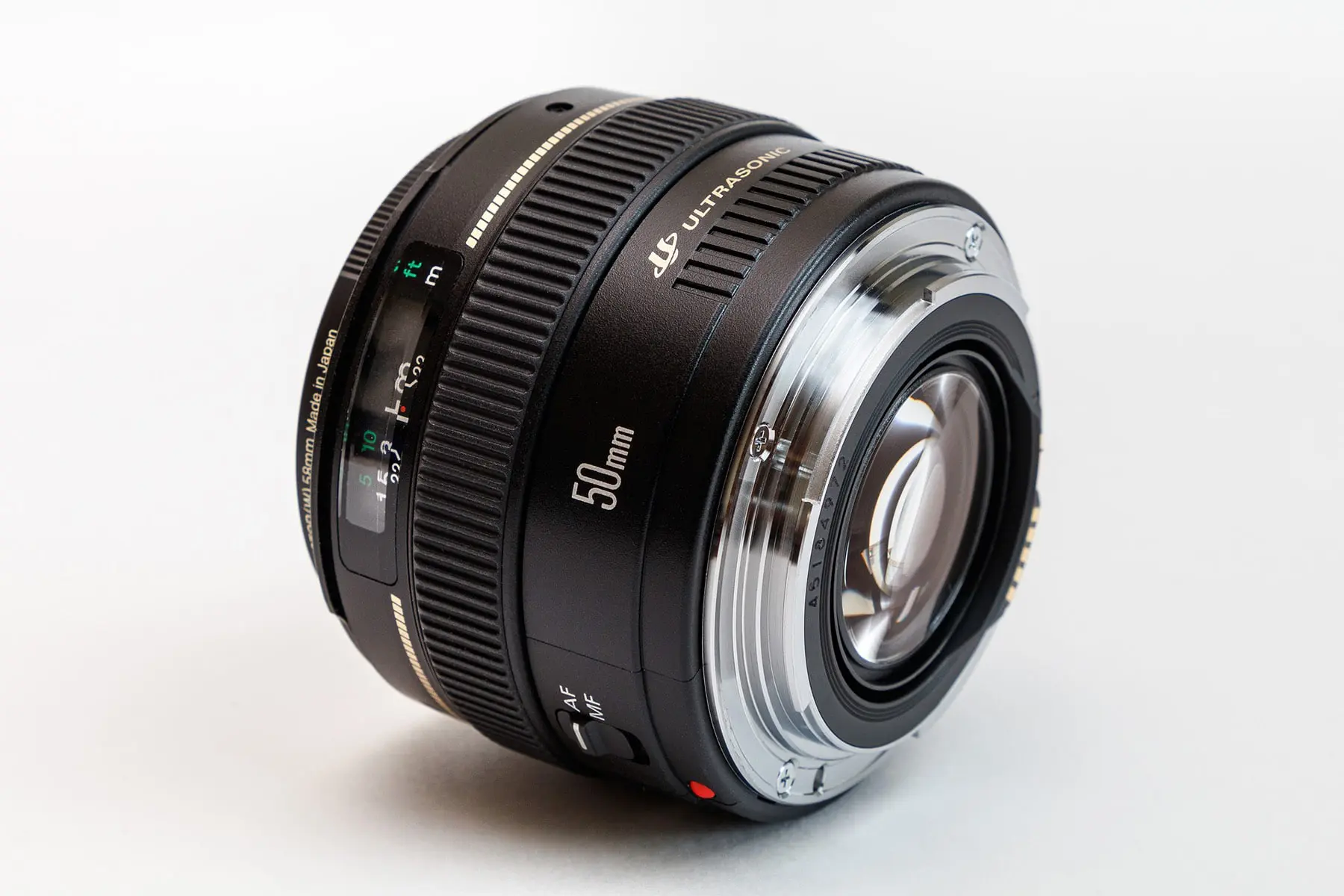
Equivalents:
- The equivalent of the Canon is Nikon’s Nikkor Z 50mm f/1.8 S. It is a fantastic go-to lens that also has great low-light performance.
- Sigma 50mm F1.4 Art DG HSM Lens for Canon/Nikon;
- Sony – FE 50mm F1.8 Standard Lens (SEL50F18F/2);
- Rokinon 50mm F1.4 Lens for Canon EF Digital SLR.
Cost: This lens is budget friendly, so expect it to cost around the $100 mark. The Nikon equivalent costs around $600. Sigma $750, Sony $250, Rokinon $400.
Prime/Zoom: Prime
Why is it good:
- If you’re a beginner on a budget, it is the most cost-effective lens that gives you a nice shallow depth of field.
- This lens allows you to capture gorgeous, sharp images and movies with beautiful background blur.
- This lens is compact and lightweight.
- You can use it for different angles.
- Can be used for flat lays.
- Great lens for capturing stories.
- If I only had one lens for food photography, that will be the nifty fifty.
What do you need it for: Because of the aperture that goes as low as f/1.8 it’s great in low light situations like in a restaurant, or at an evening meal time. It performs great with higher aperture numbers as well, that allows you to use it with any lighting.
Notes: It a great lens to purchase once you figured how the manual settings work on your kit lens.
Example picture

2. Lens: Canon EF 24-70mm f/2.8L II USM Standard Zoom Lens
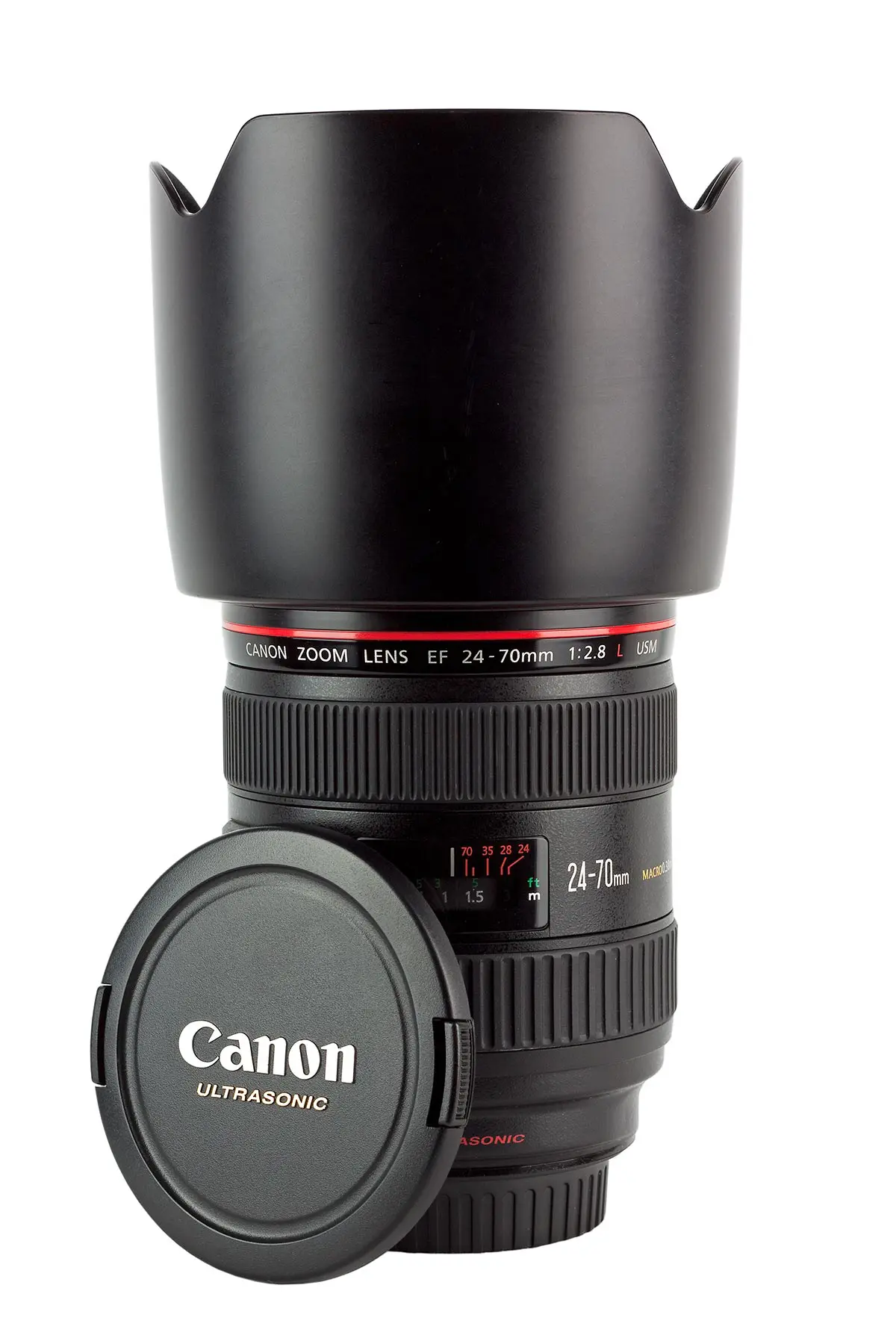
Equivalents:
- Nikon AF-S FX NIKKOR 24-70mm f/2.8G ED Zoom Lens with Auto Focus;
- Sigma 24-70mm f/2.8 DG OS HSM Art Lens for Canon/Nikon;
- Sony SEL2470GM E-Mount Camera Lens: FE 24-70 mm F2.8 G Master Full Frame Standard Zoom Lens;
- Tamron SP 24-70mm F/2.8 Di VC USD G2 for Canon DSLR Cameras;
- Olympus M.Zuiko Digital ED 12-40mm F2.8 Pro Lens, for Micro Four Thirds Cameras;
- Panasonic LUMIX Professional 12-35mm Camera Lens G X VARIO II, F2.8 ASPH, Dual I.S. 2.0 with Power O.I.S., Mirrorless Micro Four Thirds.
Cost: Canon lens costs around $1,700. Nikon $1,500. Sigma $1,000, Sony $1,500, Tamron $1200, Olympus $1000, Panasonic $1000.
Prime/Zoom: Zoom
Why is it good:
- A zoom lens is perfect for quickly reframing your dish and play around with the composition without moving your camera (perfect for when you are shooting on a tripod).
- This lens is sharp and has a high image quality.
- The lens is versatile – you can use it for other purposes like landscape, portrait, travel and lifestyle photography.
What do you need it for: Once you’ve got your hands on the nifty fifty and got used to it, you might feel that you want more flexibility and go with a zoom lens.
Notes: If you’re going to buy a zoom lens, make sure you save up and buy a quality one! Kit lenses that zoom are fine for the beginner, but you’re going to want a higher quality zoom lens the deeper you get into food photography. Keep in mind that this lens is quite heavy. It weights 1.77 lbs or 800 g.
Example pictures
The left picture of this sourdough bread loaf is fully zoomed out (shot at 24mm) and the right picture is fully zoomed in (70mm).

3. Lens: Canon EF 35mm f/2 IS USM Wide-Angle Lens
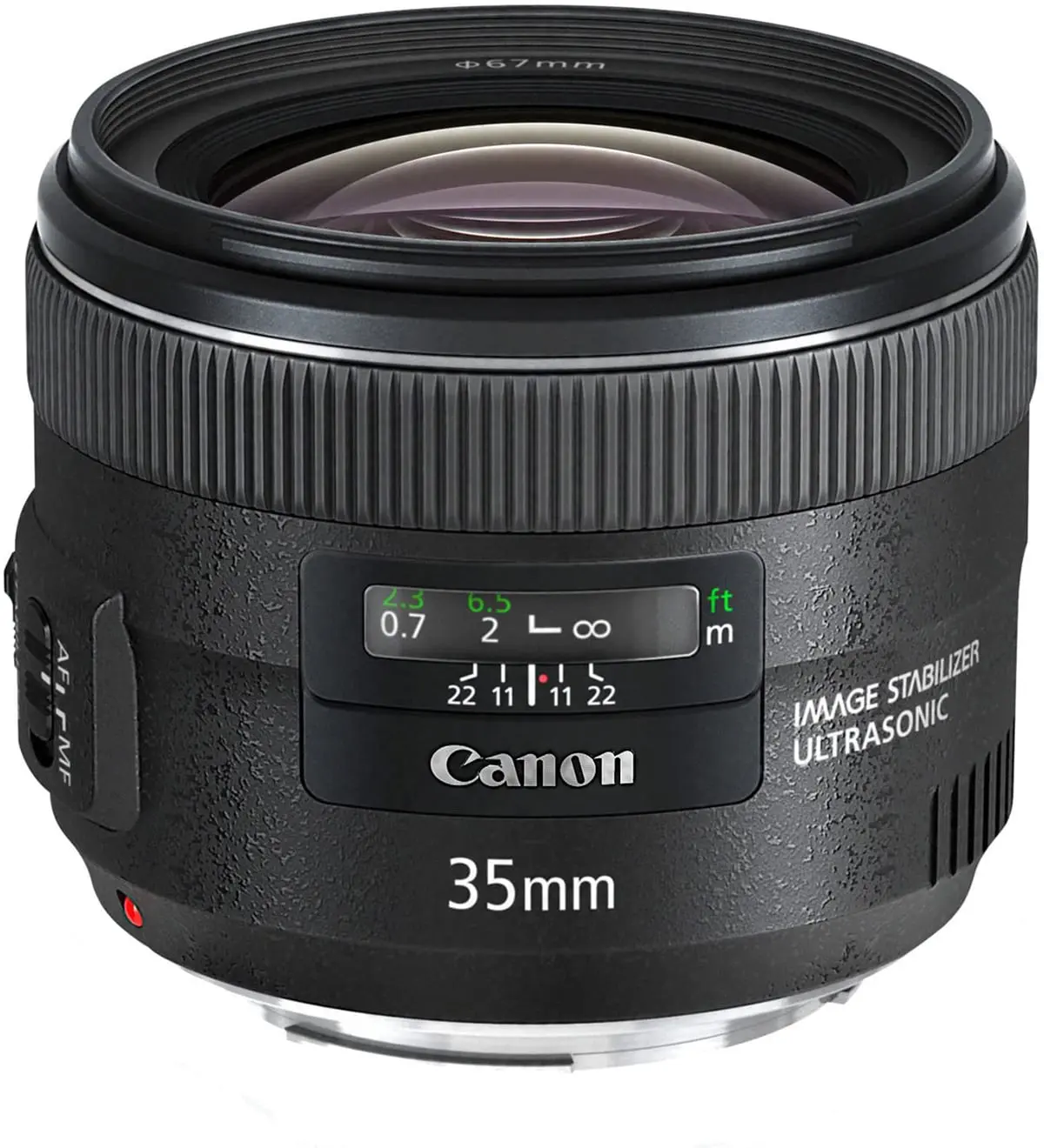
Equivalents:
- Nikon AF-S DX NIKKOR 35mm f/1.8G Lens with Auto Focus for Nikon DSLR Cameras;
- Yongnuo YN35mm F2 Lens 1:2 AF/MF Wide-Angle Fixed/Prime Auto Focus Lens for Canon EF Mount EOS Camera
- Sony 35mm F2.8 Sonnar T FE ZA Full Frame Prime Fixed Lens.
Cost: Canon is around $550. The Nikon equivalent is around $200. Yongnuo $100, Sony $800.
Prime/Zoom: Prime
Why is it good:
- Great image quality (one of the best in Canon lenses for the price).
- Has instant manual focus which is almost silent.
- Has image stabilization.
- Can capture large areas without distortion at the edges.
- Works as a 50mm lens on a cropped sensor DSLR cameras (see above).
What do you need it for: Perfect for shooting big table scenes and flat lays. Whenever you need to capture a large area, this wide-angle lens will do the job.
Notes: It’s a nice lens to add to your collection if you are shooting flat lays. It will capture even larger area when used with a full-frame sensor DSLR. It’s not easy to get shallow depth of filed with this lens.
Example picture
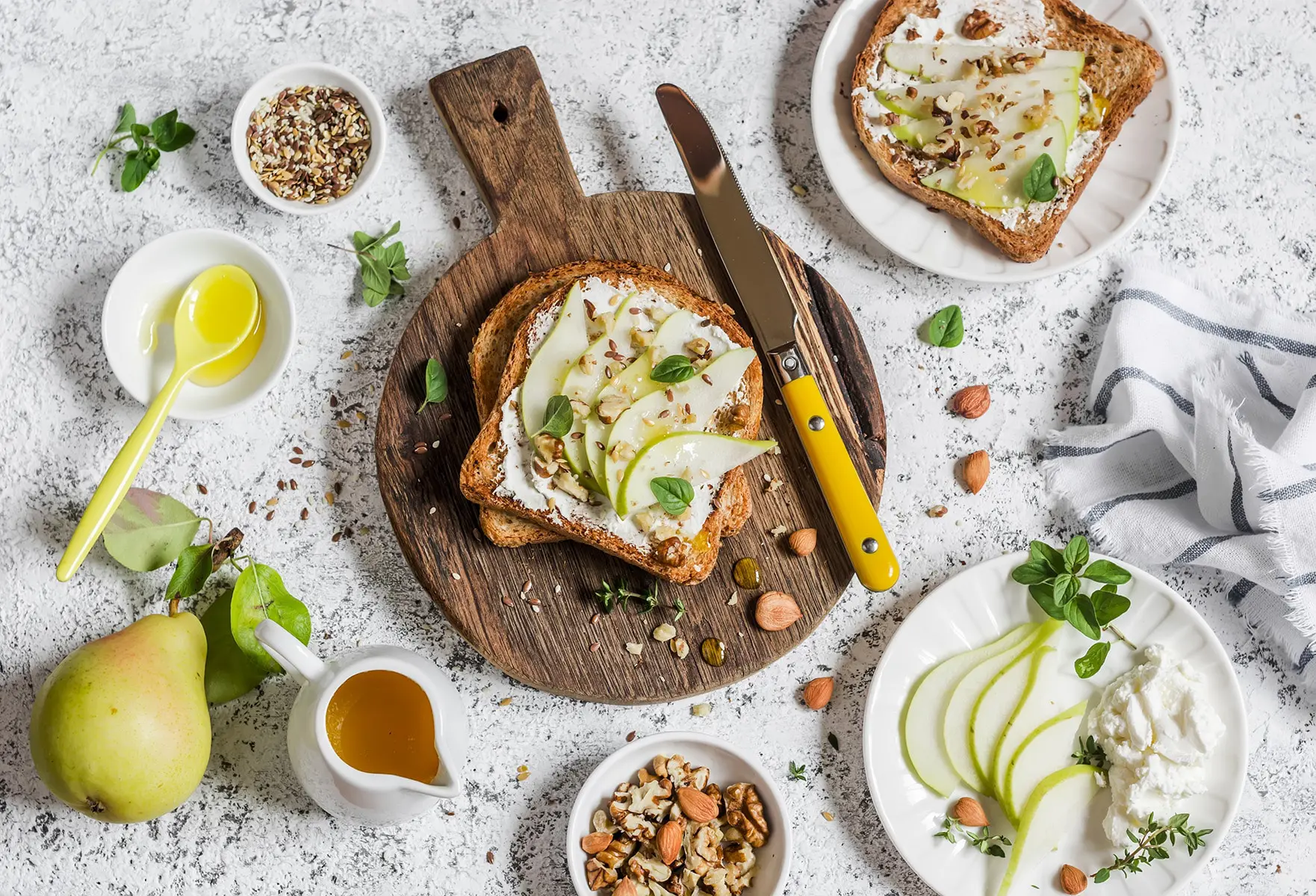
4. Lens: Canon EF 100mm f/2.8L IS USM Macro Lens

Equivalents:
- Nikon 105mm Micro f/2.8;
- Sigma 258306 105mm F2.8 EX DG OS HSM Macro Lens for Nikon DSLR Camera (for Nikon, Sony and Sigma DSLR cameras);
- Sony 100mm f/2.8 Macro Lens for Sony Alpha Digital SLR Camera;
- Yongnuo YN100mm F2 Medium Telephoto Prime Lens with AF MF 100mm Fixed Focal Length Aperture F/2~F/22 for Canon EOS Rebel Cameras;
- Tokina at-X 100mm f/2.8 PRO D Macro Lens for Canon EOS Digital and Film Cameras.
Cost: Canon $900. Nikon $700, Sigma around $400, Sony $800, Yongnuo $200, Tokina $450.
Prime/Zoom: Prime
Why is it good:
- A macro lens is ideal for taking those tiny detail shots.
- Excellent sharpness and image quality.
- You’ll need a macro lens if you want to photograph tiny objects at a very close distance. They can focus much nearer than normal lenses. If you want to learn more about macro lenses, make sure to read this article.
- Has vibration reduction which is perfect for when you are hand holding it.
What do you need it for: When you want to get up and close to a dish and capture small details like crumbs or tiny water droplets on a fruits. It helps you take perfect 45 degree shots of your dish and at the same time keep a shallow depth of field.
Notes: This lens makes the most sense with a full frame camera body. That way you can come as close as possible to the dish to capture the most details. The lens is quite pricey but it’s worth it for intermediate and advanced photographers.
Example picture
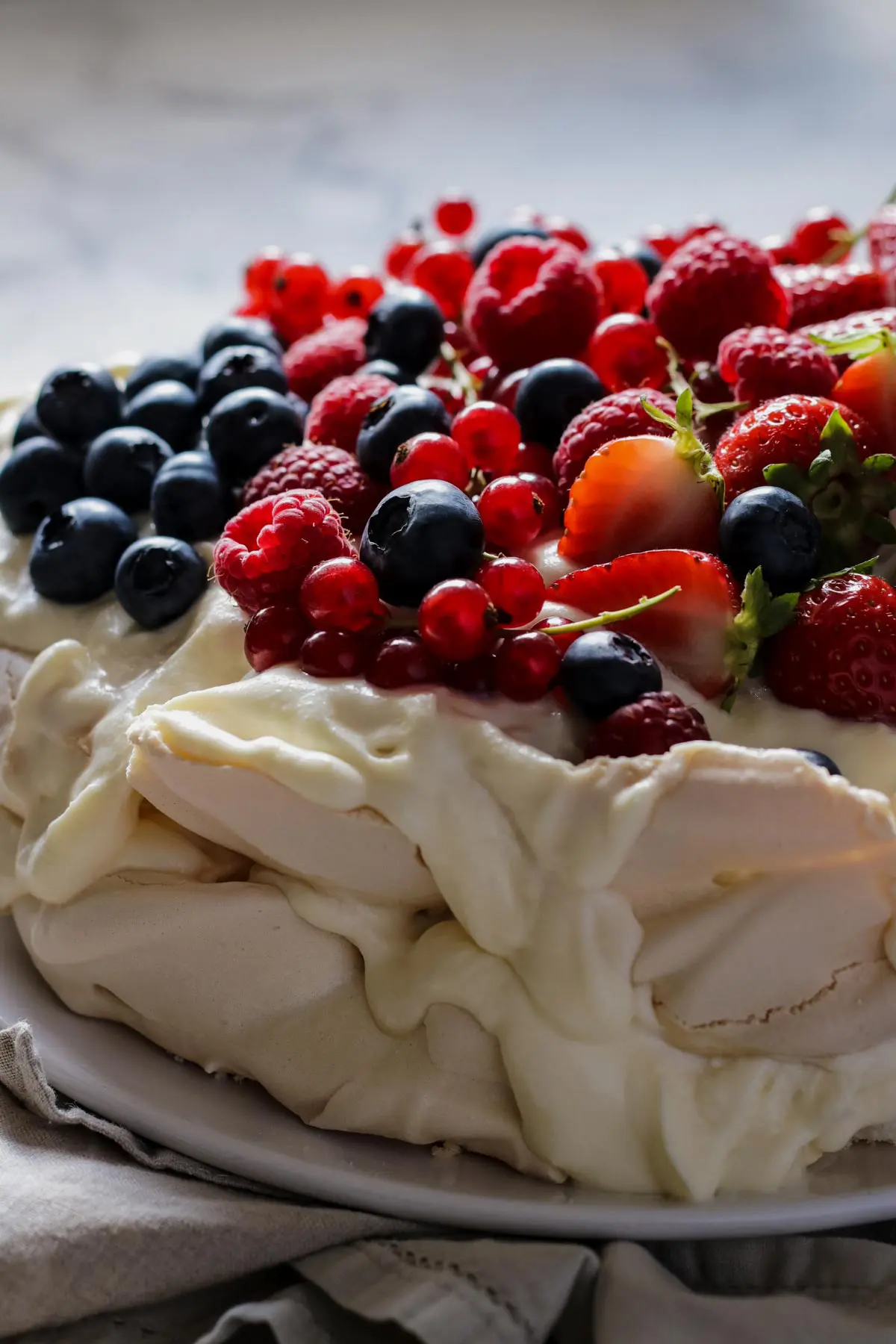
5. Lens: Tilt-Shift Lens from Canon TS-E 24mm f/3.5L II Ultra Wide
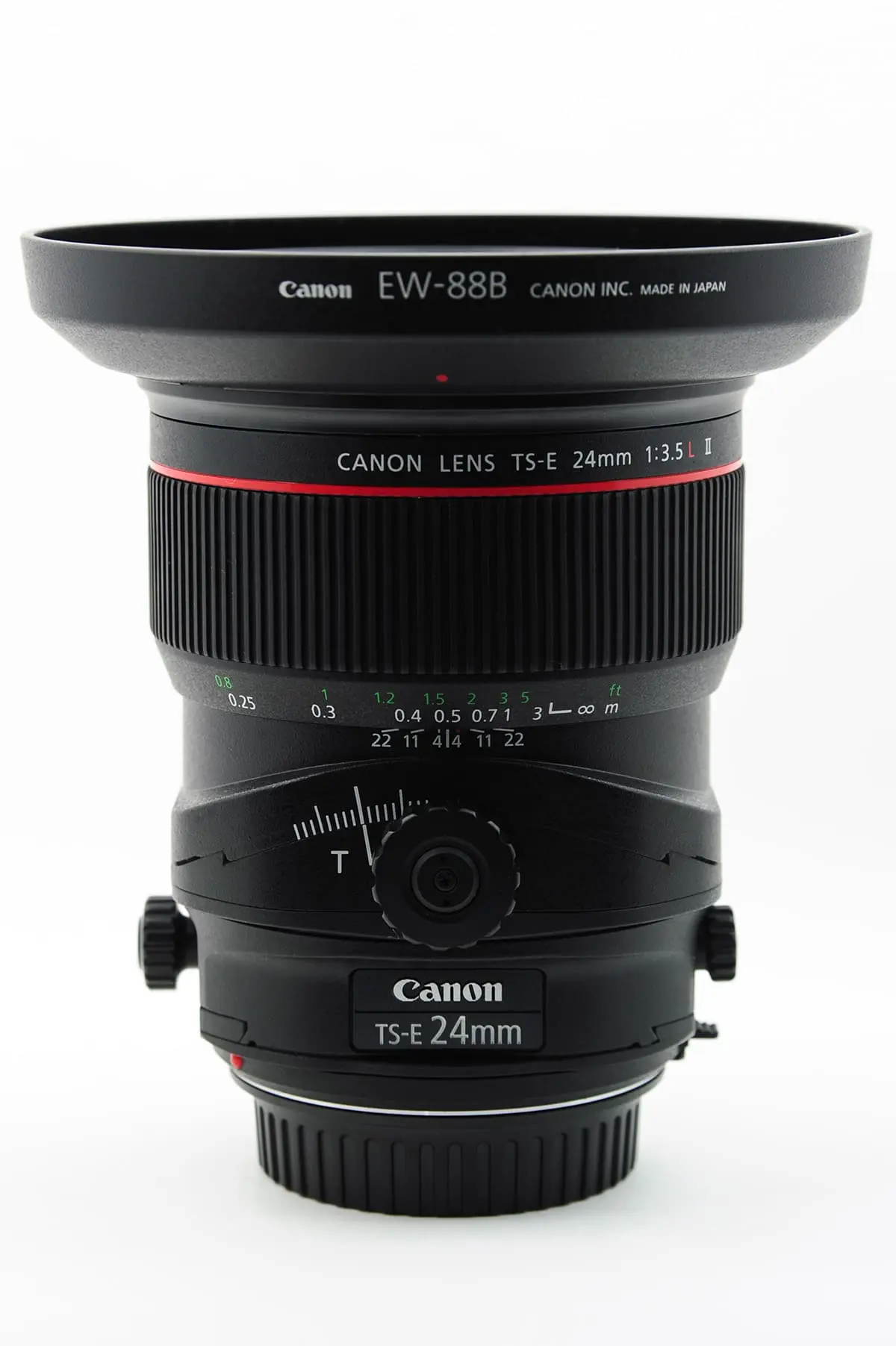
Equivalents:
- Nikon PC-E FX NIKKOR 24mm f/3.5D ED Fixed Zoom Lens for Nikon DSLR Cameras;
- Rokinon TSL24M-N 24mm f/3.5 Tilt Shift Lens for Nikon/Canon.
Cost: Canon lens is around $1900, Nikon $2200, Rokinon around $700.
Prime/Zoom: Prime
Why is it good:
- This lens allows you to very selectively choose the focus area. You can divide the frame in half and set your focus only on one side.
- Great for closeups. You can select the area that will be out of focus.
- Can be used for lifestyle, travel and landscape photography as well.
- Perfect for commercial photography or for when you need to shoot packaging in all the detail.
What do you need it for: It gives you the control over depth of field and allows to adjust the perspective of the lens, without moving the camera.
Notes: Keep in mind that because a tilt-shift lens is more specialized it is also more pricey. Also, it takes a while to get use to and takes some time to set it up before shooting. Requires a tripod.
Example picture

I hope that this list of best lenses for food photography helps you to navigate and simplify your options when considering the next lens to buy.
Remember a lens can really bring your food photography to the next level, so investing into a good piece of equipment it well worth it.
Before you invest on an expensive lens (or camera body) you can rent photo equipment in your area to get a hang on it before considering a buy.
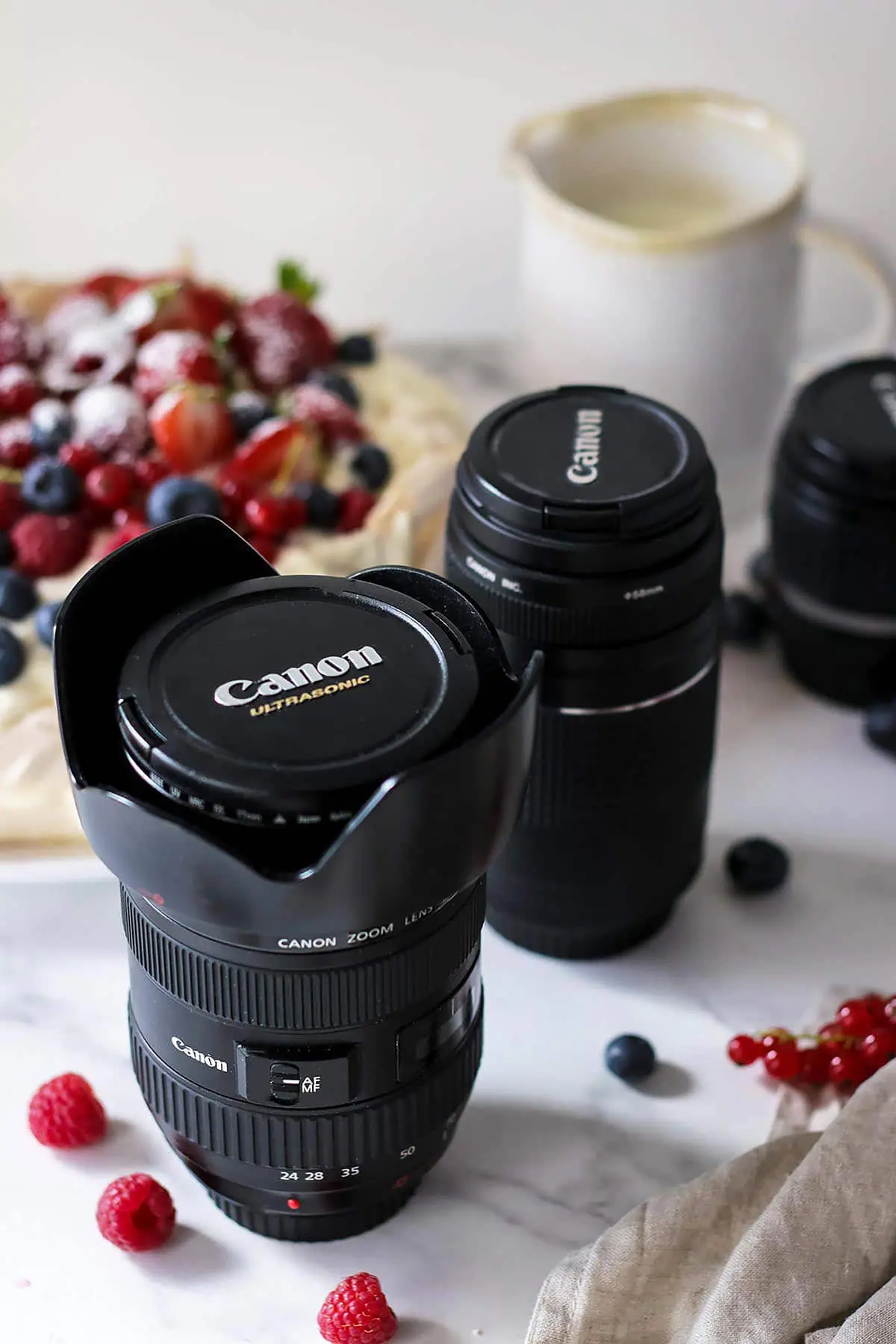
Where Can I Learn More?
Food photography requires not only good equipment but also ton of practice and knowledge. I’ve spent years studying the best practices and implementing them in order to capture beautiful food photos.
I know that food photography can be confusing, but once you learn the basics of camera settings, color in food photography, composition techniques and styling, food photography will become a breeze.
That’s why I’ve created the Happy Kitchen Food Photography Course.
I gathered all the best food photography and food styling tips, tricks and hacks and share all of the secrets I’ve learned over the years with you, so you don’t have to waste your time reading a ton of blog posts.
I’ll personally guide you in how to create mouthwatering images that will keep readers coming back for more.
What gear do you have for your food photography? What lenses do you own? Leave a comment below!


Michael Carvalho
Friday 21st of August 2020
Hi Elena. Your Blog is very informative. All my shots posted on your face book page are shot with a Canon EOS R lens. I use Canon 35 mm macro STM lens. Hope you like them all. Feel free to let me know when you dash thru to positively critic them. Love to hear from you sometimes. Can leave your comments on my site. Regards Michael.
Elena Szeliga
Saturday 22nd of August 2020
Hi Michael, thank you for your feedback! Feel free to post your photos in my Facebook group. Your cakes look so delicious! Didn't know you have a website, can you post it here?